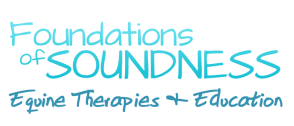“In the horse, as with human beings, where the process is well understood and plays a large part in everyday medical general practice, emotional and psychomotor problems reveal themselves in the back.
When we are under constant tension, and stressed and fatigued as a result, it is not uncommon to see the symptoms of a vertebral pathology.
The Celts, who were afraid that the sky would fall on their heads, walked around with their necks hunched between their shoulders. This symbolic gesture finds its present day counterpart in the way we tense the muscles of the neck and spine when we are anxious.
The psychological aspect is thus fundamental, reflecting the ‘top’/’bottom’ line duality mentioned in the previous chapter. There is a point of biomechanical and psychological equilibrium which is reached when there is harmony between propulsion (top line/resistance and refusal) and flexion (bottom line/yielding, relaxation and acquiescence).
At this point independence and submission, refusal and acquiescence, meet and balance each other.”
~ Denoix, in Physical Therapy & Massage for the Horse
Disabled and doubly neurodivergent human, former equine anatomist and bodyworker (no longer practicing due to Ehlers Danlos Syndrome complications), experienced equine advocate and educator, and budding disability advocate turning my sights on Australian Government policy and practice while elevating lived experience in research for horses and humans alike.
This blog is currently inactive but I occasionally check in on Facebook. Please check out the articles I keep it alive for and take something home to your horse ❤️
